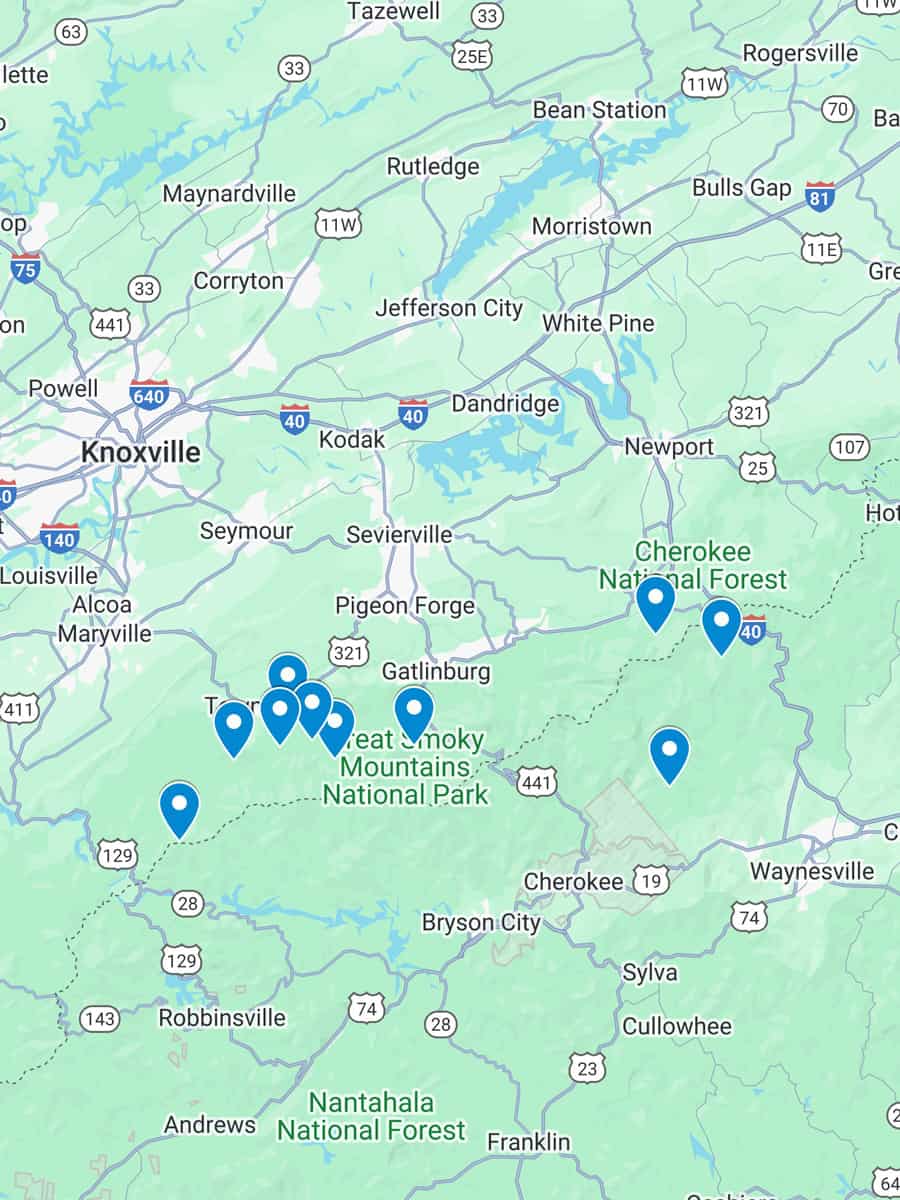
Craving a wildflower wonderland beyond the crowds? Skip the traffic jams and discover ten spots in the Smokies brimming with vibrant blooms!
From hidden waterfalls to meadows bursting with color, these gems offer an unforgettable escape. So pack your sense of adventure for nature's hidden treasures!
1. Gregory Bald
Wildflower to spot: Flame Azaleas (June)
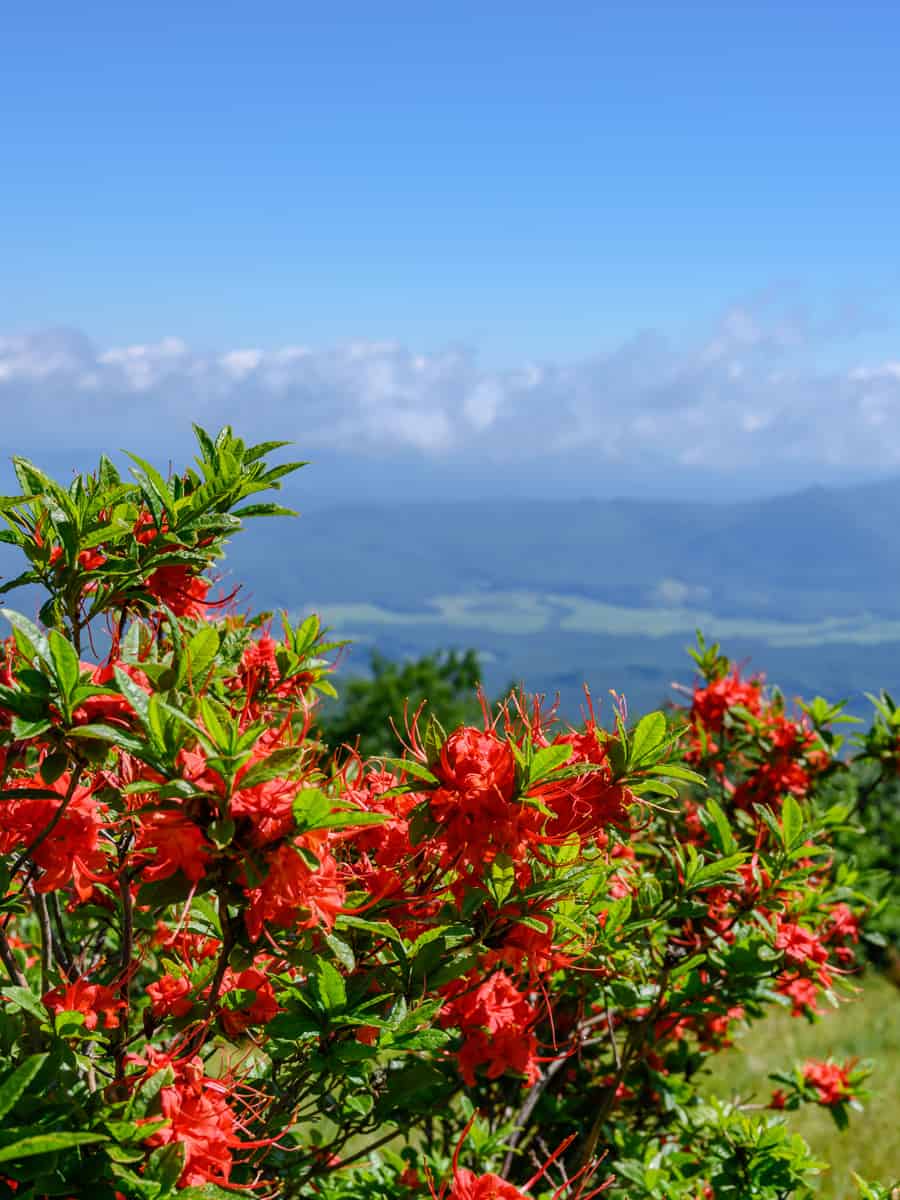
Gregory Bald is particularly famous for its breathtaking display of flame azaleas each summer. The strenuous 11.3-mile roundtrip hike via Gregory Ridge Trail promises a sea of vibrant azaleas and panoramic views of the surrounding mountains and valleys.
Despite its challenge, the trail is worth the stunning 10-acre meadow atop the summit to see these azaleas bloom. This trail is also accessible from Cades Cove.
The best time to visit Gregory Bald for the flame azaleas is mid to late June, when the azaleas reach peak bloom, showcasing a stunning array of colors, including fire red, wine red, orange, salmon, yellow, white, pink, and multi-colored.
Aside from June, August is also a great time to visit when wild blueberries are ripening at the summit, though caution is advised due to the presence of bears.
2. Cosby Nature Trail
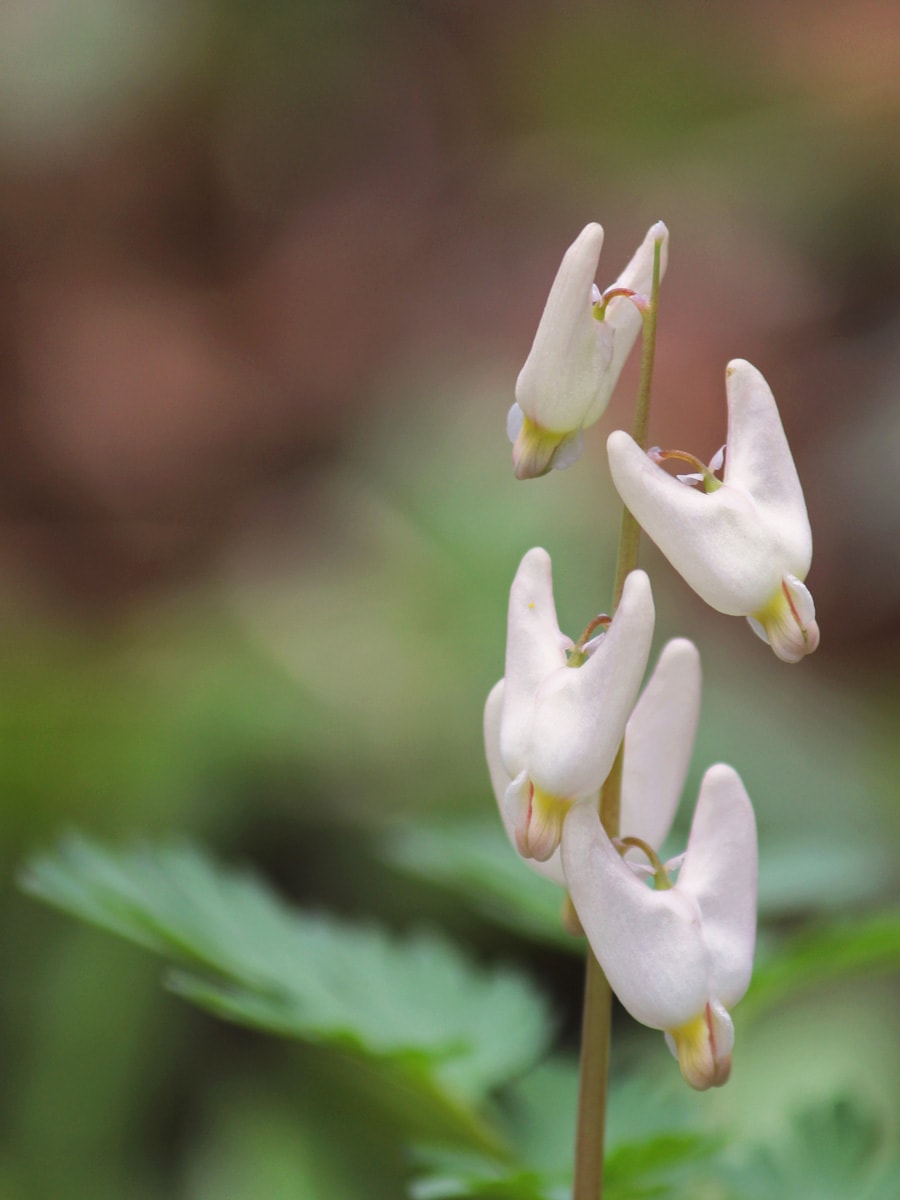
Wildflowers to spot:
- Vasey's Trillium: April to early May
- Squirrel Corn: April to May
- Dutchman's Britches: March to April
- Brook Lettuce: Late spring to early summer
- Squawroot: April to June
- Bleeding Heart: April to May
- Showy Orchid: April to May
The Cosby Nature Trail in Great Smoky Mountains National Park is an accessible 1-mile loop that weaves through stunning forested terrain and crosses several small streams, including the picturesque Cosby Creek.
Wildflowers to spot include Vasey's Trillium, Squirrel Corn, Dutchman's Britches, Brook Lettuce, Squawroot, Bleeding Heart, and Showy Orchis, with peak viewing times ranging from March to June, depending on the species.
This easy, self-guided, and family-friendly hike starts near the Cosby Campground and is perfect for those seeking a tranquil experience in a less-visited corner of the park.
3. Schoolhouse Gap Trail
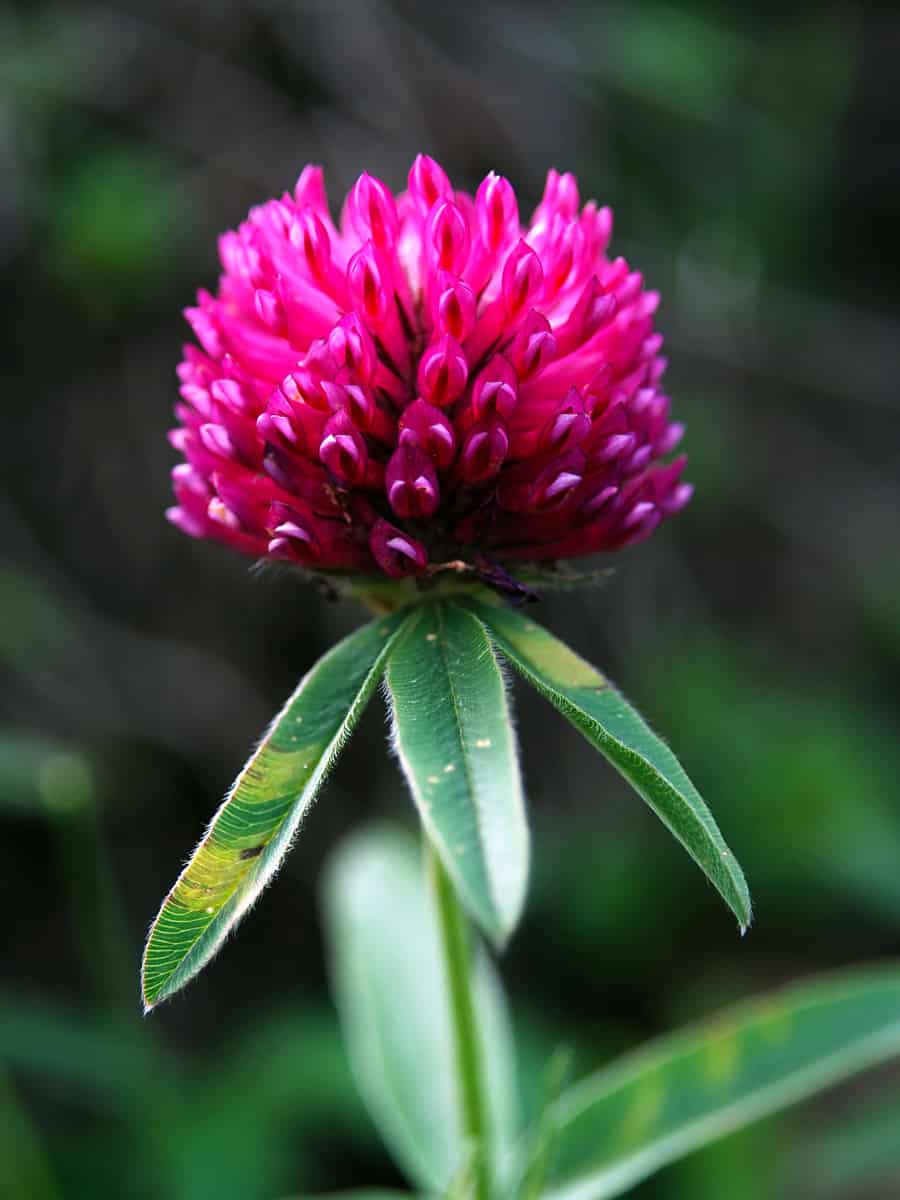
Wildflowers to spot:
- Virginia Bluebells: March to April
- Beaked Violets: April to May
- Pink Lady's Slippers: May to early June
- Fairy Wand: May to June
- Golden Aster: Late summer to fall
- Star Grass: May to June
- Red Clover: Late spring through summer
- Robin's Plantain: April to June
- Sun Drops: June to July
- Catesby's Trillium: April to May
- Lyre-leaf Sage: April to June
The Schoolhouse Gap Trail is celebrated for its diverse wildflower displays, particularly in the late spring and early summer months.
You'll be delighted by the abundance of Virginia bluebells, beaked violets, pink lady's slippers, and other native species that line the path. The area is also a habitat for various wildlife, offering birdwatchers and nature enthusiasts a rewarding experience.
This 3.8-mile roundtrip hike between Townsend and Cades Cove immerses you in a serene forest setting and showcases wildflowers, especially in the spring and early summer.
This trail is easy, with a minimal elevation gain of 513 feet, making it an ideal choice for families and hikers seeking a gentle yet rewarding outdoor experience.
The trail also passes by White Oak Sinks, offering a detour to a secluded area with a small waterfall and the Blowhole Cave, known for its cool air drafts. Read about other Smoky Mountain waterfalls here: 10 Must-See Waterfalls in the Great Smoky Mountains.
4. Spruce Flats Falls Trail
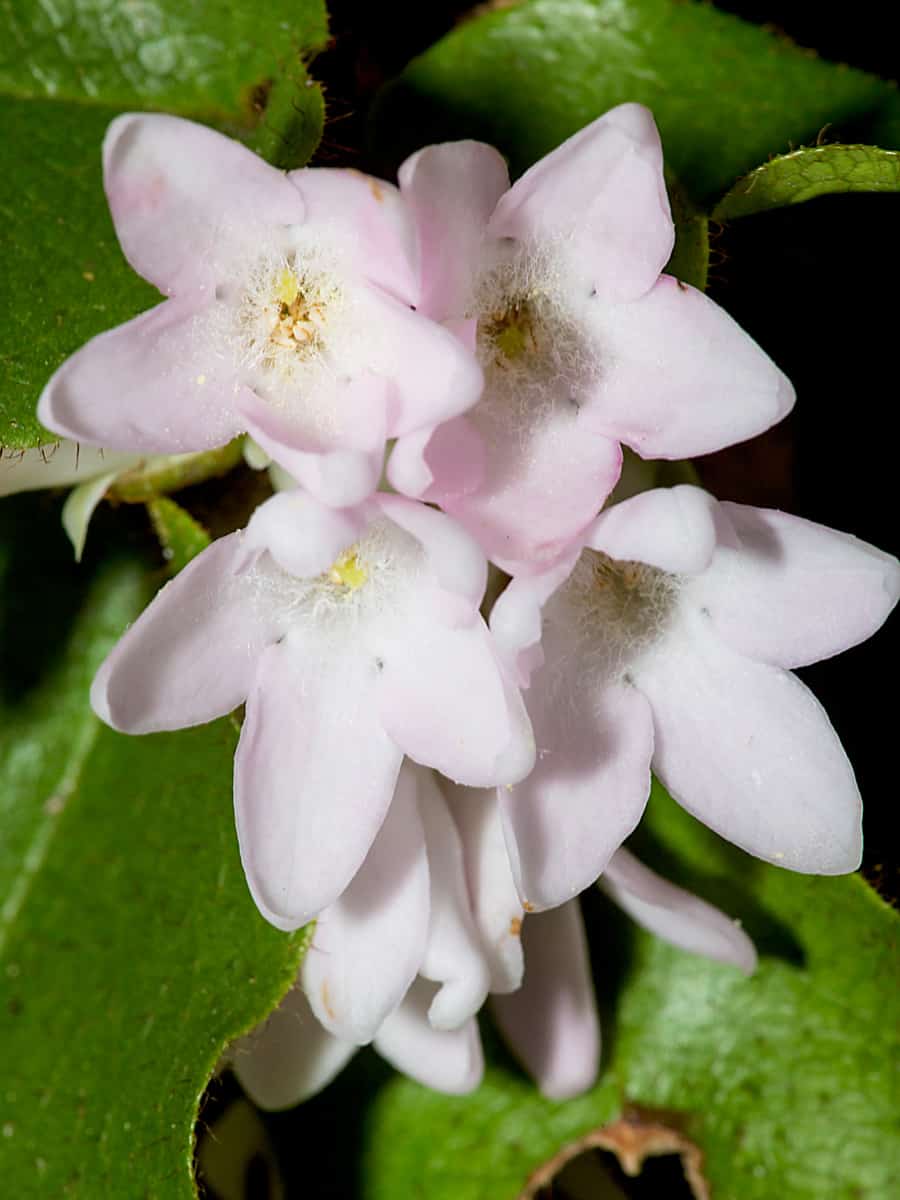
Wildflowers to spot:
- Trailing Arbutus: April to May
- Rue Anemone: March to May
- Bloodroot: March to April
- Beaked Violet: April to June
- Pussytoes: April to June
The Spruce Flats Falls Trail in the Tremont area of Great Smoky Mountains National Park is a captivating hike, spanning a 1.4- to 1.8-mile roundtrip with an elevation gain of 413- 460 feet.
From March to June, Trailing Arbutus and Rue Anemone are some of the first to appear, with the former known for its fragrant, pink, or white flowers and the latter for its delicate white or pink blooms.
Bloodroot is notable for its white flowers and red sap, signaling the start of spring. Beaked Violet follows, with pale blue to violet flowers that last into early summer. Pussytoes also emerge during this period, recognizable by their woolly, white to pinkish flower clusters.
Despite not being officially marked on park maps, the well-defined path leads to the stunning Spruce Flats Falls, a 30-foot cascading waterfall across four tiers.
5. Middle Prong Trail
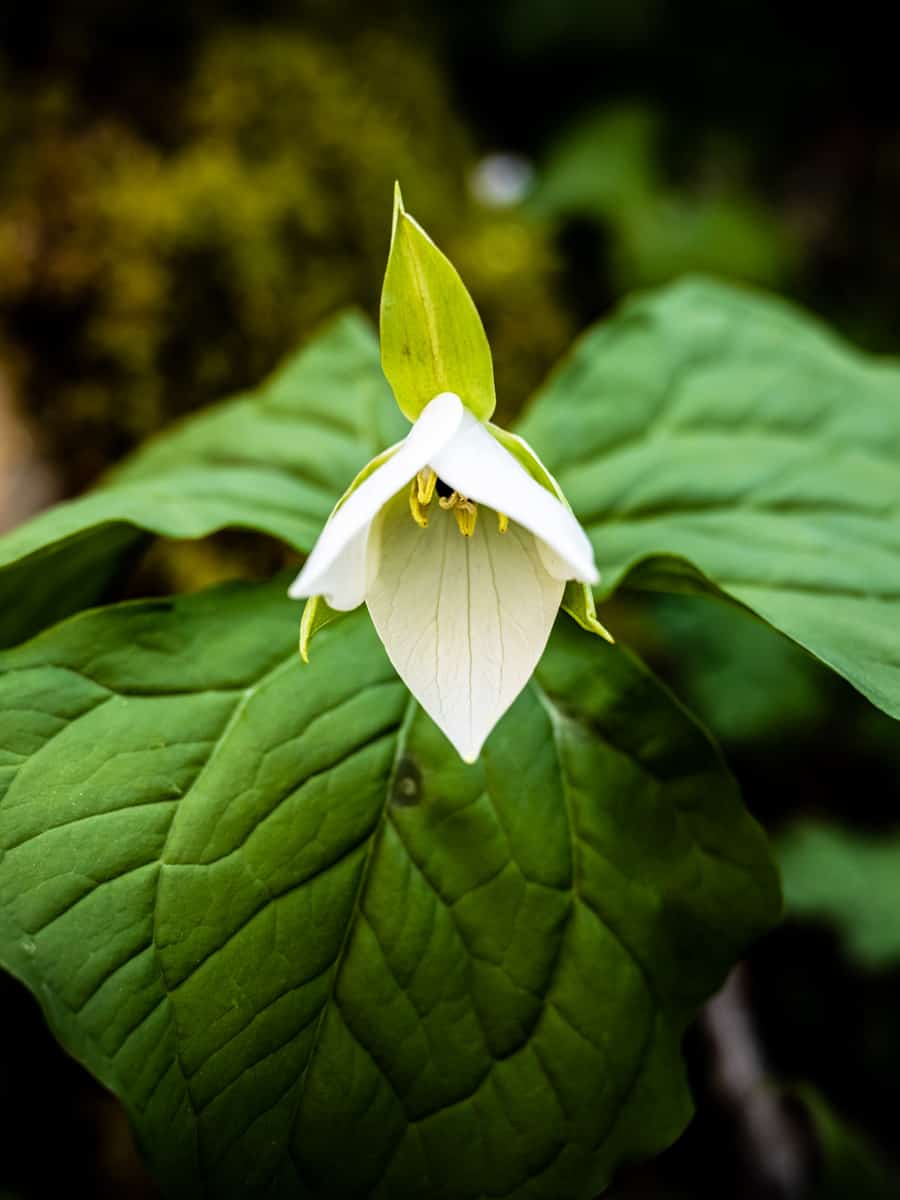
Wildflowers to spot:
- Toothwort: March to April
- Foamflower: April to June
- Violets: March to May
- Trilliums: March to May
- Wood Sorrel: May to September
- Rue Anemone: March to May
The Middle Prong Trail, an 8.3-mile roundtrip journey in the Tremont area of Great Smoky Mountains National Park, offers a blend of natural splendor and historical intrigue.
Spring and early summer are particularly magical times to hike the Middle Prong Trail, as the path is lined with Violets, Crested Dwarf Iris, Wood Sorrel, Rue Anemone, Foamflower, Toothwort, and Trilliums.
Following the former railroad bed of the Little River Lumber Company, the trail presents smooth pathways adorned with ferns, wildflowers, and remnants of early 1900s logging communities, such as a century-old Cadillac.
Along the way, hikers are treated to picturesque waterfalls, including the impressive Lower Lynn Camp Falls, a 35-foot cascade.
6. Chestnut Top Trail
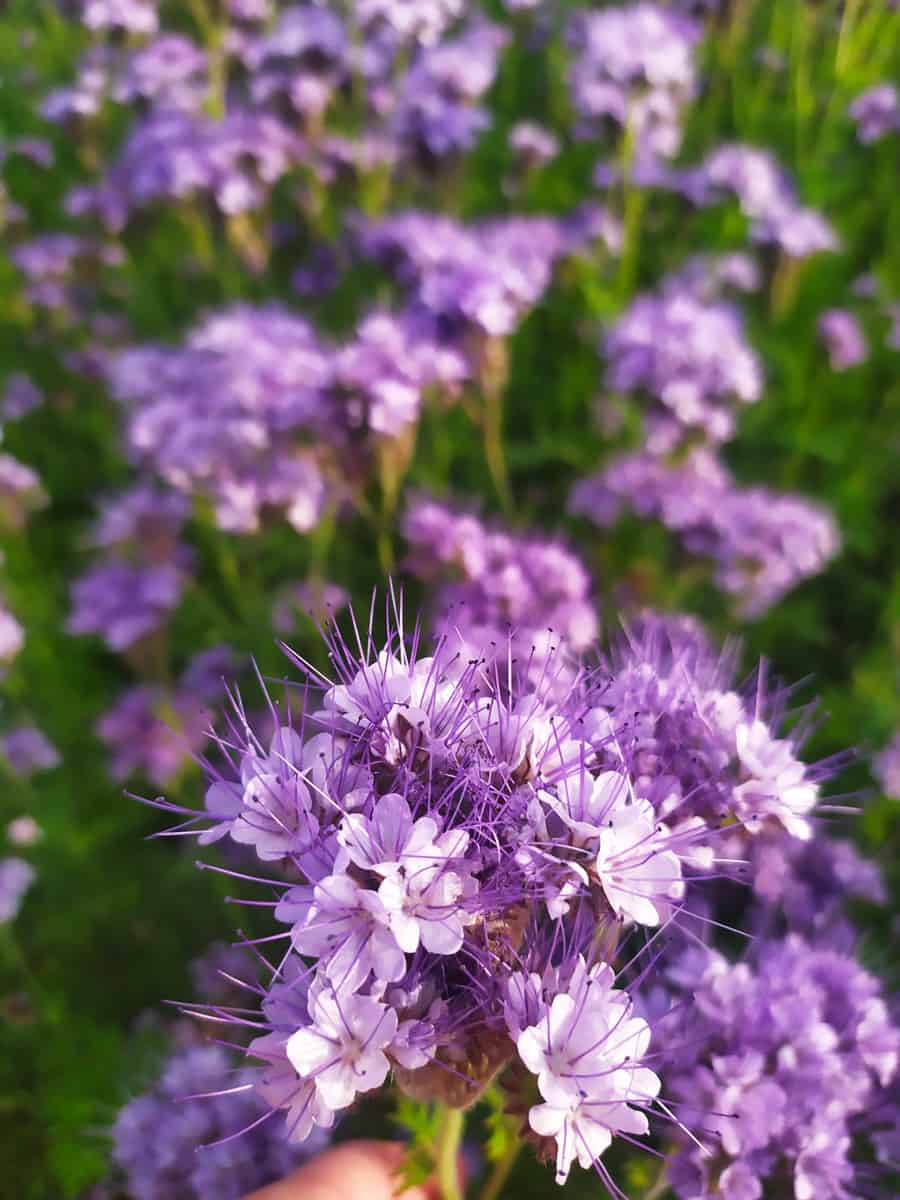
Wildflowers to spot:
- Spring Beauties: March to April
- White and Yellow Trillium: April to May
- Bloodroot: March to April
- Hepaticas: March to April
- Violets: March to May
- Jack-in-the-pulpit: April to June
- Bishop's Cap: May to June
- Purple Phacelia: April to May
- Fire Pink: May to June
- Plantain-leaf Pussytoes: April to June
- Star Chickweed: March to May
While less renowned than some of its counterparts, the Chestnut Top Trail in the Great Smoky Mountains National Park offers a hiking experience dotted with spring wildflowers.
Spring beauties herald the season in March, followed by a succession of wildflowers that bloom throughout spring into early summer.
Wildflowers to spot include Spring Beauties, White Trillium, Bloodroot, Yellow Trillium, Hepaticas, Violets, Jack-in-the-pulpit, Bishop's Cap, Purple Phacelia, Fire Pink, Plantain-leaved Pussytoes, Star Chickweed, and Wild Stonecrop.
In the late spring and early summer, you can look forward to seeing Hairy Beard-tongue, Rattlesnake Hawkweed, and Squawroot.
Beginning at the Townsend Wye, the 4.3-mile trail intersects with the Schoolhouse Gap Trail, presenting a moderately trafficked route with a strenuous 8.6-mile round trip and an elevation gain of nearly 1,500 feet.
7. Balsam Mountain Road (aka Heintooga Spur Road)
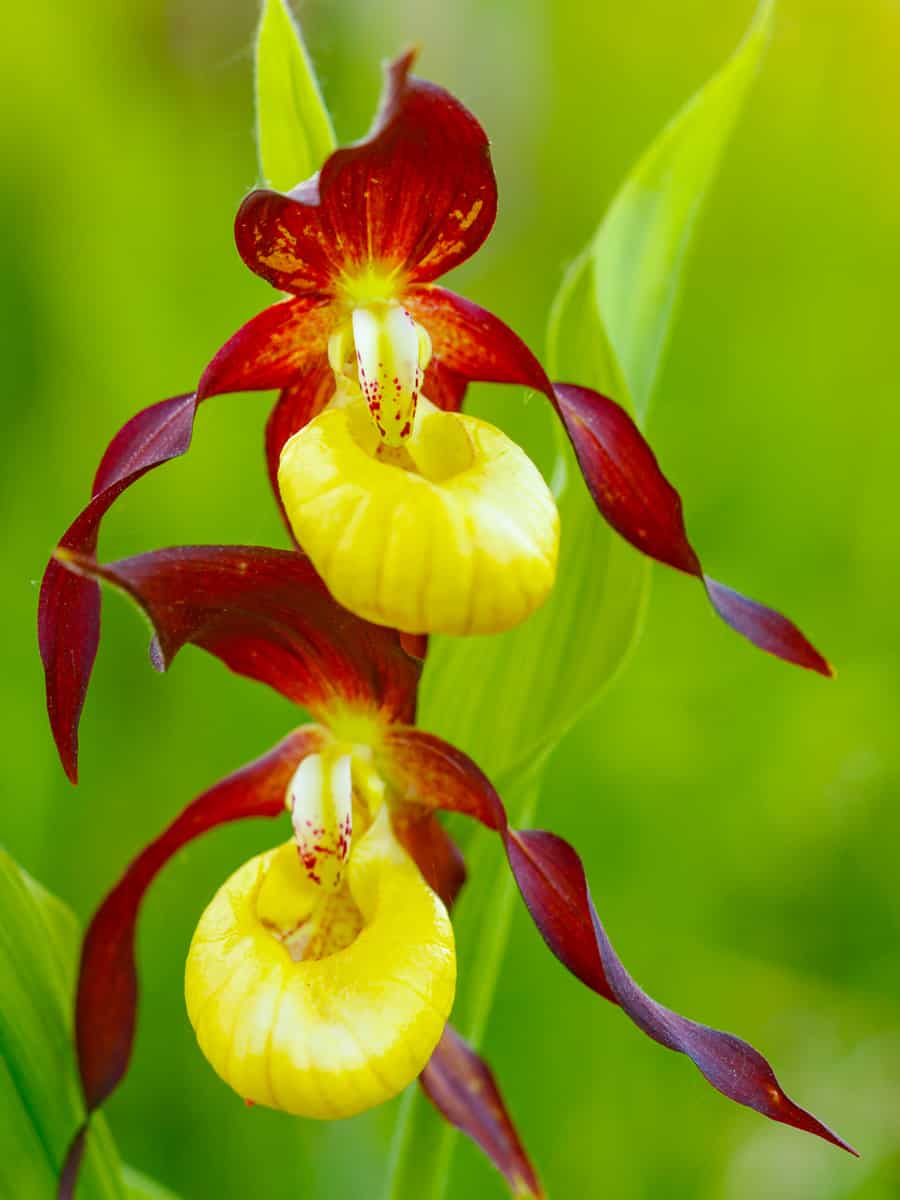
Wildflowers to spot:
- Rhododendrons: June to early July
- Mountain Laurel: May to June
- Spring Ephemerals: Generally, March to May for early bloomers
- Trilliums: March to May
- Lady's Slippers: May to early June
- Hepaticas: March to April
Balsam Mountain Road offers views of diverse wildflowers from late spring through early summer. The route is known for its Rhododendrons and Mountain Laurels, which typically bloom from June to early July, displaying shades of pink, white, and purple.
Earlier in spring, you can spot ephemeral flowers like trilliums, lady's slippers, and hepaticas, mainly in the moist woods bordering the road.
Spanning approximately eight miles, the road ascends 5,000 feet, culminating at the Balsam Mountain Campground entrance, with hardwood or spruce-fir forests. It's accessible via the Blue Ridge Parkway near Cherokee, North Carolina.
Transitioning from pavement to gravel at Heintooga Picnic Area, the road prohibits larger vehicles, maintaining its charm. The unpaved section follows a mountain stream for 18 miles before reconnecting with pavement toward Cherokee.
The Balsam Mountain Trail provides a 10.1-mile hike for outdoor enthusiasts with stunning mountain vistas and diverse wildflowers. It closes from late November to mid-March due to weather, prioritizing visitor safety.
8. Little River Trail
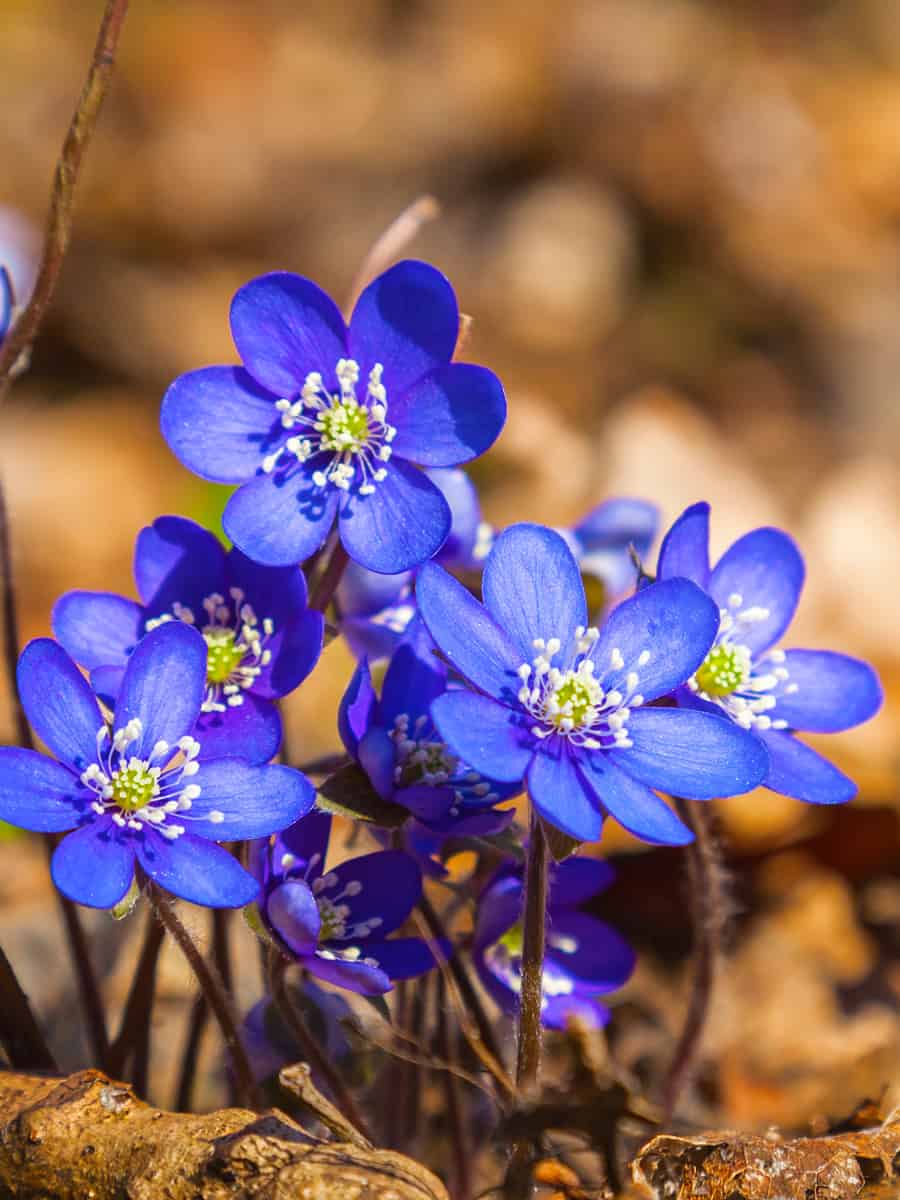
Wildflowers to spot:
- Spring Beauties: March to April
- Trailing Arbutus: March to April
- Hepaticas: March to April
- Yellow Trillium: April to May
- Dwarf Cinquefoil: April to June
- Stonecrop: Summer months
- Canadian Violets: April to May
- Umbrella Leaf: May to June
The Little River Trail in Elkmont, Great Smoky Mountains, spans 4.9 miles roundtrip with a 412-foot elevation gain. Formerly a railroad bed, it parallels the Little River, known for its cascades and diverse aquatic life.
The best time to hike the Little River Trail to see wildflowers is between mid-March and April, when the early spring blooms like spring beauties and trailing arbutus can be seen.
As the season progresses, look for Hepaticas, Rue Anemone, Crested Dwarf Iris, Yellow Trillium, Dwarf Cinquefoil, Stonecrop, Canadian Violets, and Umbrella Leaf.
9. Baxter Creek Trail
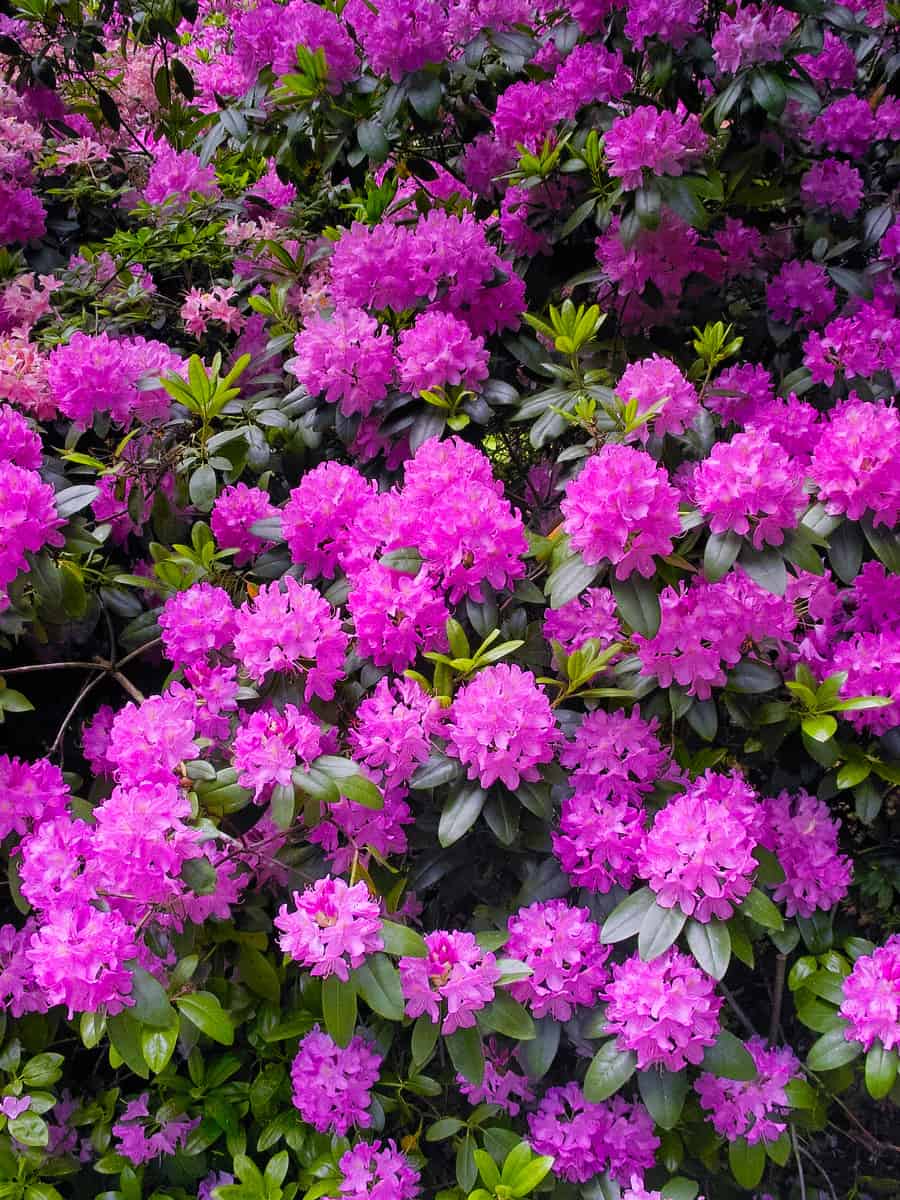
Wildflowers to spot:
- Rhododendrons: June to early July
- High-elevation species and blooming times can vary.
The Baxter Creek Trail leading to Mount Sterling is renowned for its challenging terrain, ranking among the most strenuous hikes in the Great Smoky Mountains National Park.
Typically, wildflowers in the Great Smoky Mountains begin to bloom as early as late March and continue through June, with different species peaking at various times throughout this period.
Spring ephemerals such as Trilliums, Hepaticas, and Spring Beauties may bloom in the lower elevations in late March and April.
As you ascend elevation, the blooming period can extend into May and June, with rhododendrons and mountain laurels showcasing their flowers. Given the Baxter Creek Trail's ascent to Mount Sterling and its high elevation, it's reasonable to expect diverse blooming periods as you hike.
Covering a roundtrip distance of 12.2 miles with a 4200-foot elevation gain, hikers are rewarded with sweeping vistas and glimpses of wildflowers en route.
Beginning at Big Creek Campground, the trail ascends sharply through diverse landscapes, from dense forests and boulder fields to rhododendron tunnels, culminating in spruce-fir terrain at higher elevations.
This hike showcases the area's rich biodiversity, notably its resilient old-growth forests preserved by the rugged landscape. The summit, crowned by a historic fire tower erected by the Civilian Conservation Corps in 1935, offers unparalleled 360-degree views of the surrounding mountains.
10. Rich Mountain Loop
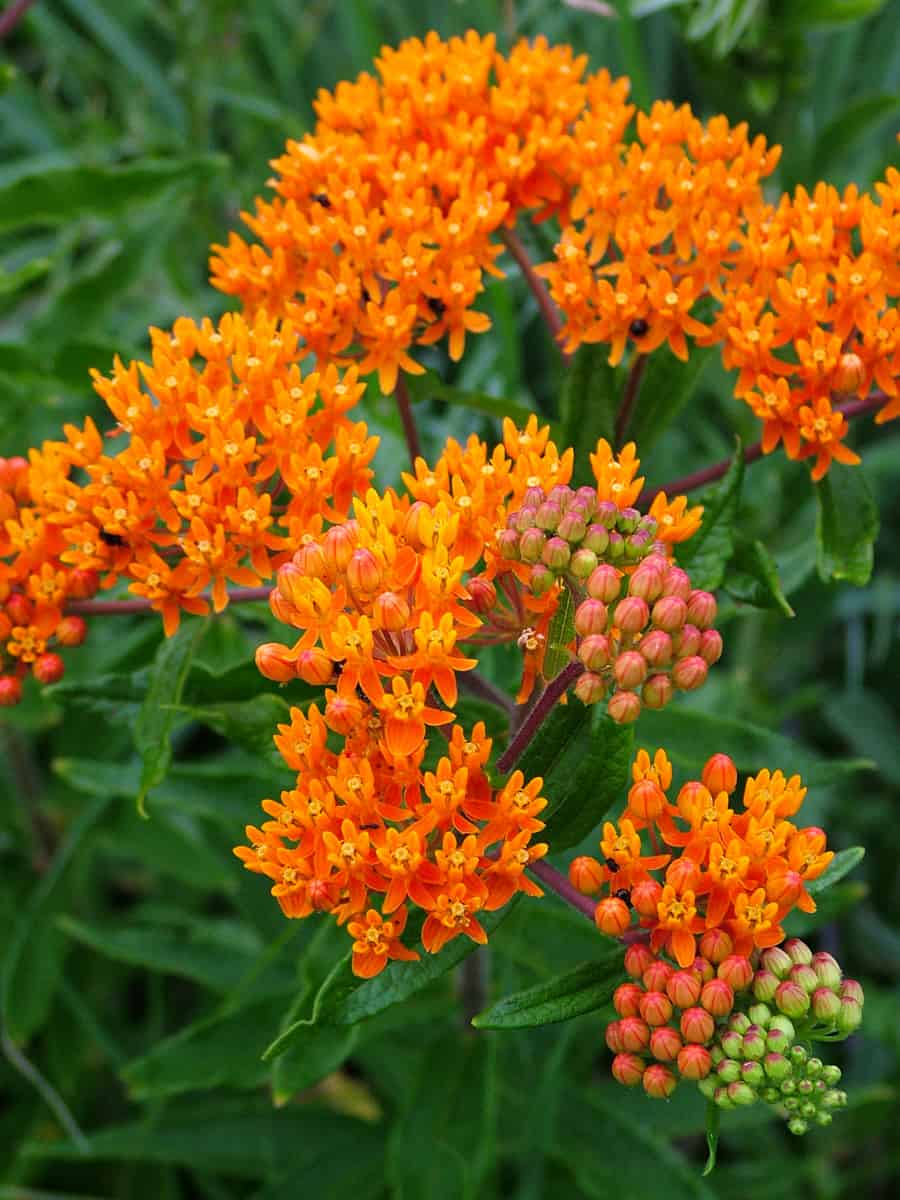
Wildflowers to spot:
- Black-eyed Susan: June to August
- Mountain Laurel: May to June
- Flame Azalea: Late June to early July
- Purple Phacelia: April to May
- Rattlesnake Hawkweed: June to July
- Yellow Ragwort: April to June
- Violets: March to May
- Sweet Shrub: May to June
- Wild Geranium: April to June
- Blackberry: May to August
- Fourleaf Milkweed: June to August
- Everlasting Pea: June to July
- Butterfly Weed: June to July
The Rich Mountain Loop, an 8.5-mile hike in the Great Smoky Mountains' Cades Cove area, offers stunning vistas, diverse wildflowers, and historical landmarks.
Given the trail's varying elevations and aspects, different sections of the loop may feature different species blooming at different times, offering a prolonged wildflower season.
As you hike, you may encounter spring ephemerals such as black-eyed Susans, trillium, wild geranium, and phacelia, particularly in the lower to mid-elevation sections of the trail.
Beginning at the Cades Cove Loop Road entrance, the trail passes by the John Oliver Cabin and winds through varied terrain, including old-growth forests and rhododendron tunnels, culminating at Cerulean Knob with the remains of a fire tower.
For more activities to fill your Smoky Mountain checklist, check out our guide: 10 Smoky Mountains Experiences You Should Not Miss
Hike Your Way to Adventure in the Smokies
Remember, conquering the Smokies isn't just about reaching the summit – it's about the journey itself. And if you need company, you can sign up for the Spring Wildflower Pilgrimage in the Great Smoky Mountains National Park.
Pack water to fuel your exploration and weather-appropriate gear to ensure you stay comfortable and safe. Leave no trace — respect the delicate ecosystem by sticking to trails and disposing of waste responsibly.
But most importantly, embrace the adventure! Savor the breathtaking vistas that unfold with each step. Start planning your Smoky Mountain escape today!
